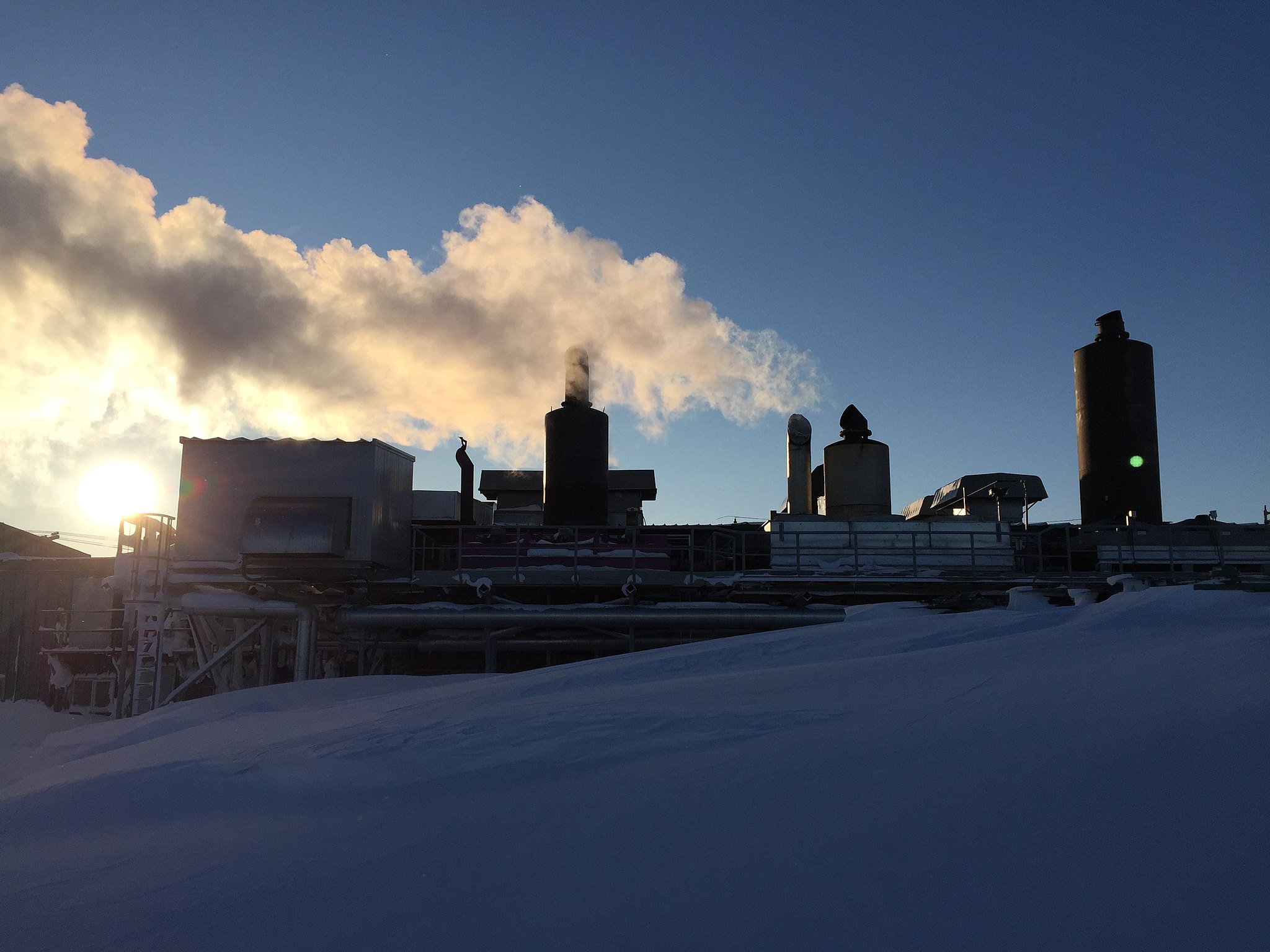How bundling power can help remote Arctic communities transition to clean energy
By teaming up and diversifying energy sources, far-flung villages can attract crucial investment.

The predominantly Inuit town of Kugaaruk, Nunavut in Canada’s far North pays more than a dollar per kWh for electricity — nearly ten times the cost of power in southern Canada. Like many of its remote neighbors in the Arctic, Kugaaruk’s steep power prices come from its need to import diesel. Given the off-grid nature of these communities, this diesel is generally shipped in or brought in by air — both of which are expensive forms of transport, compared to the pipelines that serve most major populations centers. Burning diesel also releases black carbon, a local air pollutant and powerful agent of climate change.
Several Arctic nations, including Canada, have successfully increased the proportion of renewable technologies in their electricity mix. So, why are towns such as Kugaaruk stuck with this expensive, dirty technology, while the rest of the Arctic progresses forward in sustainability? There are two key barriers: First, these towns require a dependable supply of power to operate in their harsh climates — and most renewable resources are too intermittent to provide consistent energy on their own. Second, the upfront costs for these technologies are higher than these small and generally lower-income communities can afford. At the same time, small power projects are unattractive to external investors given their lower expected returns.
This complex problem requires a solution that maintains a consistent power supply and boosts investment in the region. Community partnerships centered around hybrid generation can bring the requisite scale and reliability.
What if Kugaaruk partnered with the towns of Igloolik and Cape Dorset and presented investors with a portfolio of energy projects — perhaps by combining solar and propane, a dependable but cleaner-burning replacement for diesel? Consolidating investments can increase expected returns and reduce risk by pooling smaller and more stable, larger projects. Investors might even consider selling carbon offsets or renewable energy credits, which are more profitable with a larger package of green investments. In return, investors would charge the towns annually for the amortized cost of the investment plus a return. After paying off the capital cost, the communities will only pay for imported propane during the winter. Finally, the partnerships can work with investors to train local facility operators and coordinate expert maintenance. The communities and investors would create a public-private partnership, making sure to incorporate local knowledge and needs throughout the process.
Similar payment schemes are already being used to deploy solar power in African countries like Kenya and Nigeria, where several companies are delivering energy to rural communities by financing clean energy projects. To manage the financing issues surrounding small projects, a relatively new energy access company — Microgrid Investment Accelerator — plans to aggregate microgrid projects in order to offer more attractive investment terms.
Bundling renewables like solar with propane offsets diesel use in the summer when solar potential is high while maintaining year-round reliability. In addition, moving from diesel to propane would pave the way for the transition from biomass heating and cooking — another major source of black carbon emissions in the Arctic — to the cleaner-burning propane. Overall, these hybrid systems reduce electricity costs, improve air quality, and increase employment opportunities for isolated communities, while also mitigating climate impacts.
To implement this solution, local governments must collaborate on the technologies to include in the portfolio and on how to reach potentially interested social impact and/or energy investment partners. These communication platforms should be regionally-based, perhaps in cooperation with existing, energy-focused non-profits. For example, in Canada’s Northwest Territories, the Arctic Energy Alliance may act as a communication vehicle in partnership with the provincial government. Knowledge-sharing on structuring these investments could be managed via national and international organizations like the Arctic Council This coordination would align well with the Arctic Council’s goals per the Fairbanks Declaration in May 2017 that, among other things, sets targets to limit black carbon emissions between 25 and 33 percent below 2013 levels by 2025.
Of course, some aspects of this proposal warrant careful management. Communities must ensure that proper training is provided, which can be difficult given the number of towns to manage. If training is insufficient, the likelihood of equipment failures or misuse increases, risking physical harm, increased pollution, or worrying blackouts. Furthermore, agreements must be structured fairly for all communities. These important points require thoughtful consideration from local leaders and financial experts, facilitated by the provincial governments creating these platforms.
The benefits of attracting private capital to the region, however, are vast. As a first step, regional governments can provide platforms for remote communities like Kugaaruk, Igloolik, and Cape Dorset to come together, empowering them to bring investment in clean, reliable energy to places that are often left behind.
Henna Trewn has experience in energy policy and consulting, working with clients ranging from market operators to utilities. She is currently pursuing public policy and business graduate degrees at Harvard University and the Massachusetts Institute of Technology.

The views expressed here are the writer’s and are not necessarily endorsed by the Arctic Initiative or ArcticToday, which welcomes a broad range of viewpoints. To submit a piece for consideration, email commentary (at) arctictoday.com.